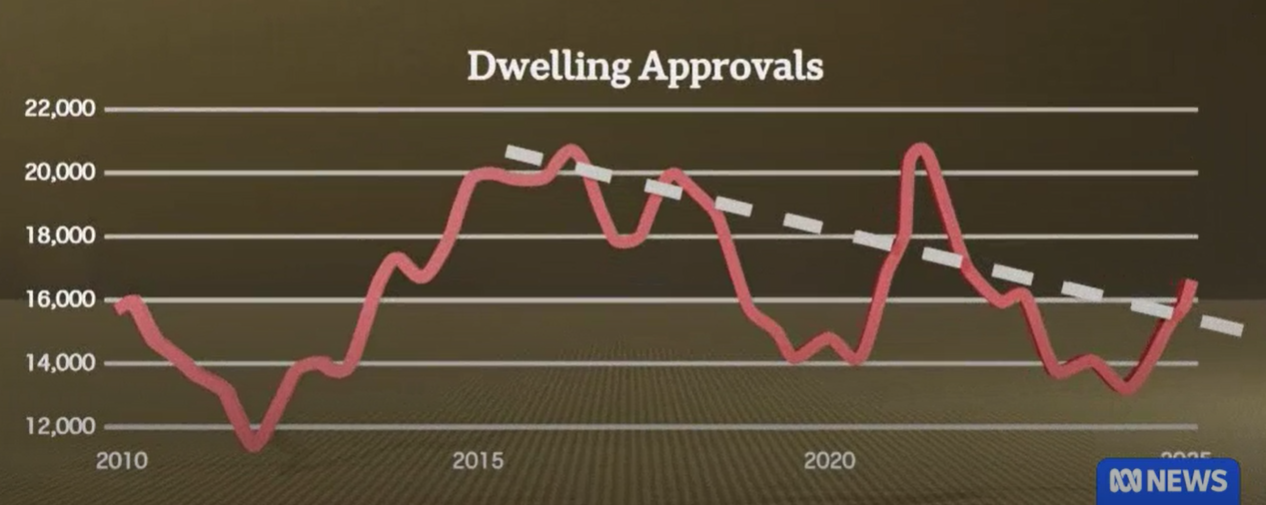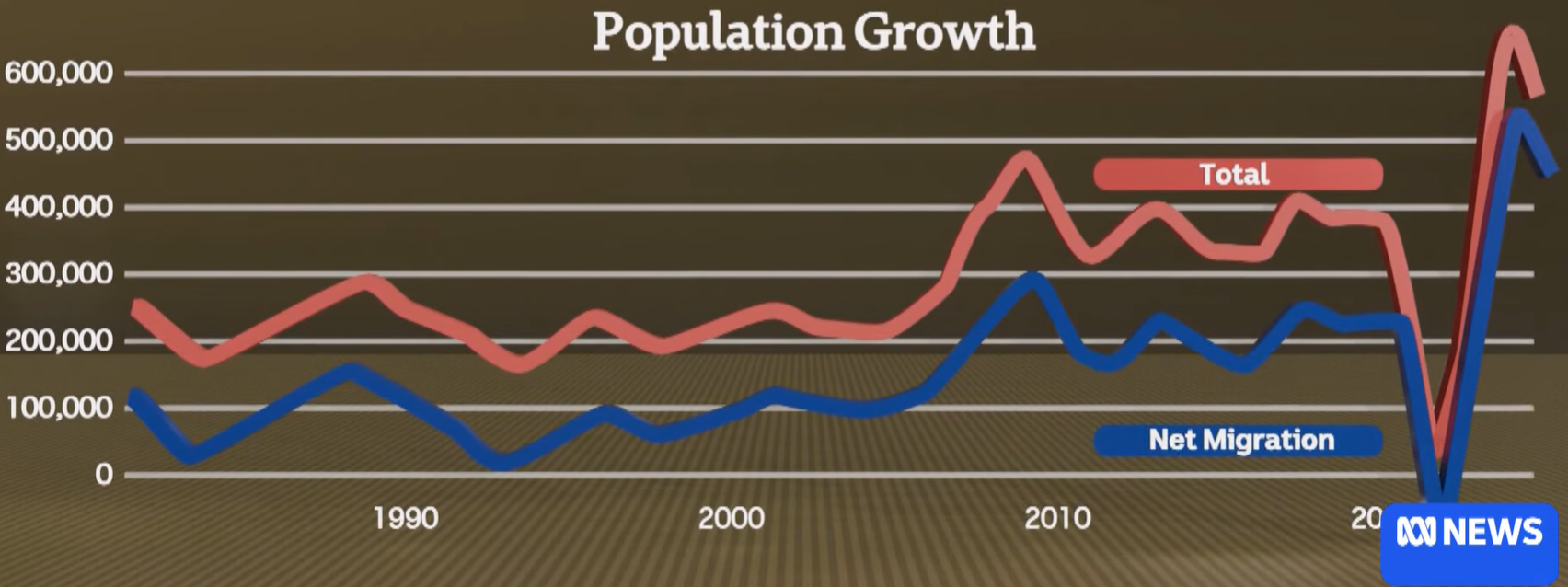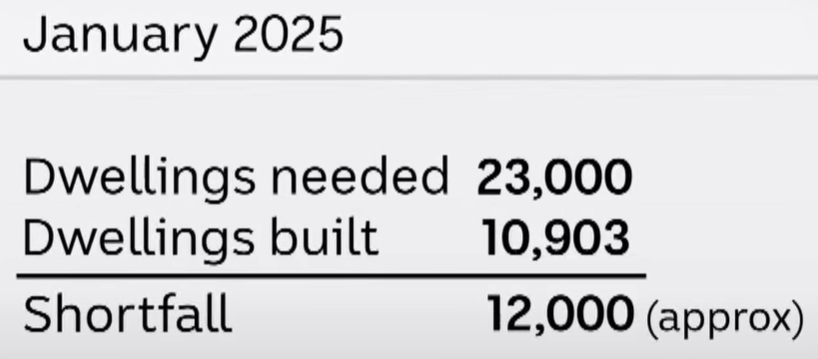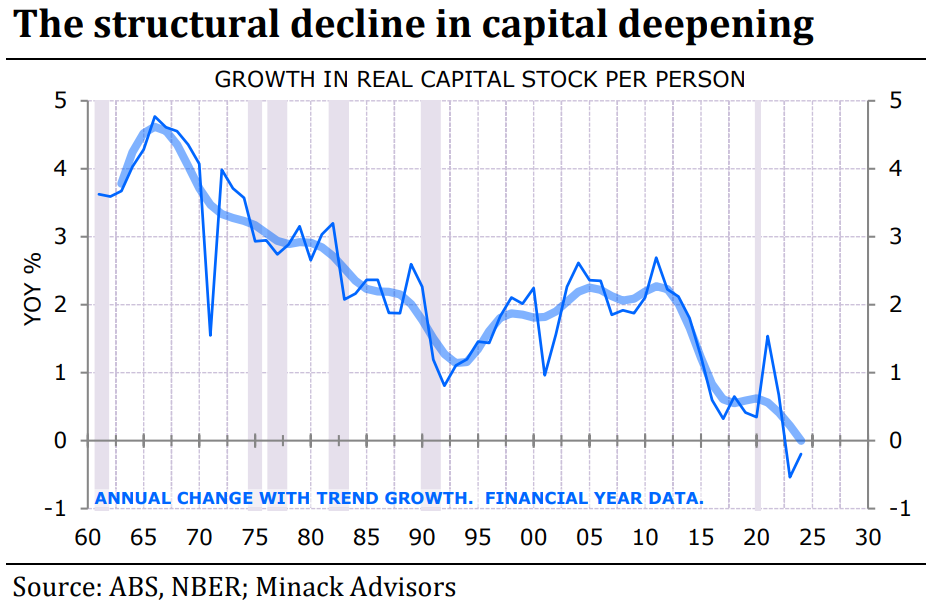Alan Kohler produced an explainer video for ABC where he summarised Australia’s housing crisis with the following:
“We know that dwelling approvals have been in trend decline for 10 years”.

“We also know that population growth has been climbing for 20 years driven by a doubling and then tripling of migration”.

“This is why we have a housing crisis: too many people, not enough houses”.
It is a simple explanation: housing supply has been in a slight decline trend, while demand has increased significantly due to record immigration.
Kohler also performed back-of-the-envelope calculations of housing supply and demand, using the Australian Bureau of Statistics (ABS) net overseas arrivals figures, estimates of natural increase, and dwelling approvals.
On the demand side, Kohler estimates that net overseas migration, plus natural increase, created a population demand of 57,000. Divide this number by 2.5 – the average occupancy rate – and this gives demand for an additional 23,000 dwellings.

On the supply side, there were 10,903 dwellings approved for construction in January 2024, assuming it takes one year to build a home.
As a result, Kohler estimates that there was a housing shortfall of around 12,000 dwellings in January 2025. “Demand was more than twice supply”, says Kohler.

Kohler concludes by stating, “I reckon the government should connect those two bits of data and be accountable for the gap.”
Curiously, in a written piece for ABC, Kohler ran the same numbers and came up with the following conclusion:
“It’s obvious what is needed to fix housing affordability. It will require a campaign to recruit 80,000 tradies from overseas, lower taxes on residential development to improve developers’ margins, and most of all — 100,000 government-funded public housing units a year”.
Indeed, if immigration demand is running significantly ahead of supply, the solution is to operate a smaller, higher-quality, and more skilled migration system.
As Kohler himself admits, the federal government has imported demand far quicker than new housing and infrastructure can be built. This has created a structural housing shortage and chronic infrastructure bottlenecks.
It has also lowered the nation’s productivity through “capital shallowing.” Because the population has grown faster than business, infrastructure, and housing investment, resulting in less capital per worker and declining productivity.

Economists Gerard Minack, Ross Gittins, and the RBA’s Michael Plumb have each identified Australia’s capital shallowing through mass immigration as a contributing factor to Australia’s productivity decline.
Cutting immigration significantly would, therefore, resolve the demand-supply imbalance in housing and infrastructure, as well as boost productivity by increasing the average skill level and capital deepening, as the population grows more slowly than business, infrastructure, and housing investment.
Why did Alan Kohler go to the trouble of identifying the problem only to ignore the number one solution?

